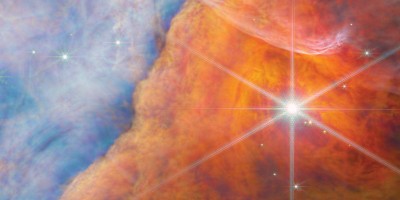The detection of a gravitational-wave background at nanohertz frequencies can tell us if and how supermassive black holes merge, and inform our knowledge of galaxy merger rates and supermassive black hole masses. All we have to do is time pulsars.

S. Burke-Spolaor (West Virginia University)

adapted from ref. 8, AAS
References
Kormendy, J. & Ho, L. C. Ann. Rev. Astron. Astrophys. 51, 511–653 (2013).
Begelman, M. C., Blandford, R. D. & Rees, M. J. Nature 287, 307–309 (1980).
Milosavljevic, M. & Merritt, D. Astrophys. J. 596, 860–878 (2003).
Khan, F. M., Holley-Bockelmann, K., Berczik, P. & Just, A. Astrophys. J. 773, 100–106 (2013).
Sesana, A. Mon. Not. R. Astron. Soc. 433, L1–L5 (2013).
Detweiler, S. Astrophys. J. 234, 1100–1104 (1979).
Hellings, R. W. & Downs, G. S. Astrophys. J. Lett. 265, L39–L42 (1983).
Taylor, S. R. et al. Astrophys. J. Lett. 819, L6 (2016).
Phinney, E. S. Preprint at https://arxiv.org/abs/astro-ph/0108028 (2001).
Arzoumanian, Z. et al. Astrophys. J. 821, 13 (2016).
Ryu, T. et al. Mon. Not. R. Astron. Soc. 473, 3410–3433 (2018).
Bonetti, M., Sesana, A., Barausse, E. & Haardt, F. Mon. Not. R. Astron. Soc. 477, 2599–2612 (2018).
McWilliams, S. T., Ostriker, J. P. & Pretorius, F. Astrophys. J. 789, 156 (2014).
Siemens, X., Ellis, J., Jenet, F. & Romano, J. D. Class. Quantum Grav. 30, 224015 (2013).
Sesana, A., Shankar, F., Bernardi, M. & Sheth, R. K. Mon. Not. R. Astron. Soc. 463, L6–L11 (2016).
Mingarelli, C. M. F. et al. Nat. Astron. 1, 886–892 (2017).
Mingarelli, C. M. F., Sidery, T., Mandel, I. & Vecchio, A. Phys. Rev. D 88, 062005 (2013).
Burke-Spolaor, S. Preprint at https://arxiv.org/abs/1511.07869 (2015).
Acknowledgements
I thank J. Lazio, D. Foreman-Mackey and X. Siemens for useful discussions. I also thank S. Taylor and S. Burke-Spolaor for permission to edit and reproduce some of their figures. The Flatiron Institute is funded by the Simons Foundation.
Author information
Authors and Affiliations
Corresponding author
Rights and permissions
About this article
Cite this article
Mingarelli, C.M.F. Probing supermassive black hole binaries with pulsar timing. Nat Astron 3, 8–10 (2019). https://doi.org/10.1038/s41550-018-0666-y
Published:
Issue Date:
DOI: https://doi.org/10.1038/s41550-018-0666-y
- Springer Nature Limited
This article is cited by
-
Distant supermassive black holes spotted in galaxy merger
Nature (2023)
-
Review of pulsar timing array for gravitational wave research
Journal of Astrophysics and Astronomy (2020)


